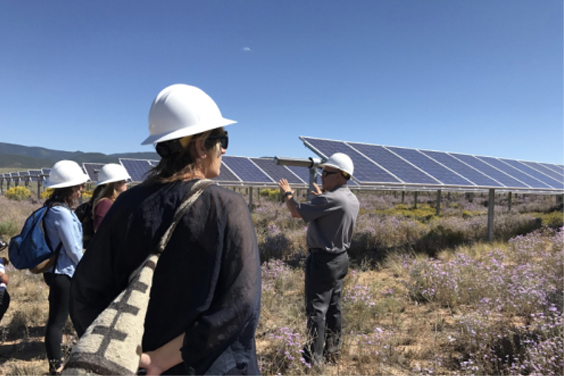CITY OF TRUTH OR CONSEQUENCES
The City of Truth or Consequences on how they used a power purchase agreement to save $2.5 million dollars.
The Truth or Consequences Electric Department provides electricity to residents within Truth or Consequences and Williamsburg. The City has and continues to be interested in renewable energy, specifically solar energy, to help offset some of its operating costs and helpresidents save money on their electric bills. To that end the City enlisted the help of a third party consultant (Triple H Solar) to help determine an optimal size, location and support the procurement of the solar energy in the form of a power purchase agreement (PPA). The City was able to secure an energy purchase agreement from a local New Mexico solar installation company that will save us approximately $2,500,000 over the term of the contract.
What tools, resources or financing did you use to establish your project?
Getting input from a third party was the catalyst to making the project a success. It’s a profession that we, and suspect most municipalities, don’t interface with much at all. So having support to help guide us with the decision-making was very useful. We did not have the cash to purchase the asset. Sowe used a power purchase agreement (PPA) to integrate the solar energy into our existing infrastructure. The PPA we solicited in an RFP was a no-upfront-cost option, which was very attractive to us. There are options inside those agreements that will let public agencies infuse cash amounts if some is available below the total purchase price of the solar array. The New Mexico Energy, Minerals and Natural Resources Department was also helpful in educating the City on the “Do’s and Don’ts” related to contracting in the solar energy arena as well as providing general education on how solar energy works and could benefit the City.
What benefits have you realized?
To date, our savings have been small. But we knew that going in when we contracted for the solar energy purchases. Over time, the savings will increase, which was our ultimate goal. The project has attracted some economic development opportunities and other local entities (public and private) have now become more interested in solar energy. Our projected savings will allow us to invest more in our existing electrical infrastructure.
What challenges did you overcome to implement your project?
Education was the largest challenge overall. The concept of how the solar energy flows and is accounted for was foreign to most of us. But once it was explained to us, it was easy to understand. Public education on the savings and how the project could be paid for also took some time. But once we took the time to educate ourselves and answer questions from others, the process was much smoother.
What advice would you give neighboring communities who are trying to implement a similar project?
Get some general “Solar 101” training to understand the basics. Also, truly understand what your electrical usage needs are collectively (system-wide if you own your own electrical distribution system) or per facility and what solar energy can actually offset relative to the usage.
Anything else?
Make sure your analysis takes into account pending future energy rate changes from your electric supplier and the growth of facilities. Make sure you’ve made all the energy efficiency modifications reasonably available to the facilities in question so you don’t mistakenly oversize a solar array after energy efficiency measures are taken. And don’t take on the project without some expert support to help you through the process.


